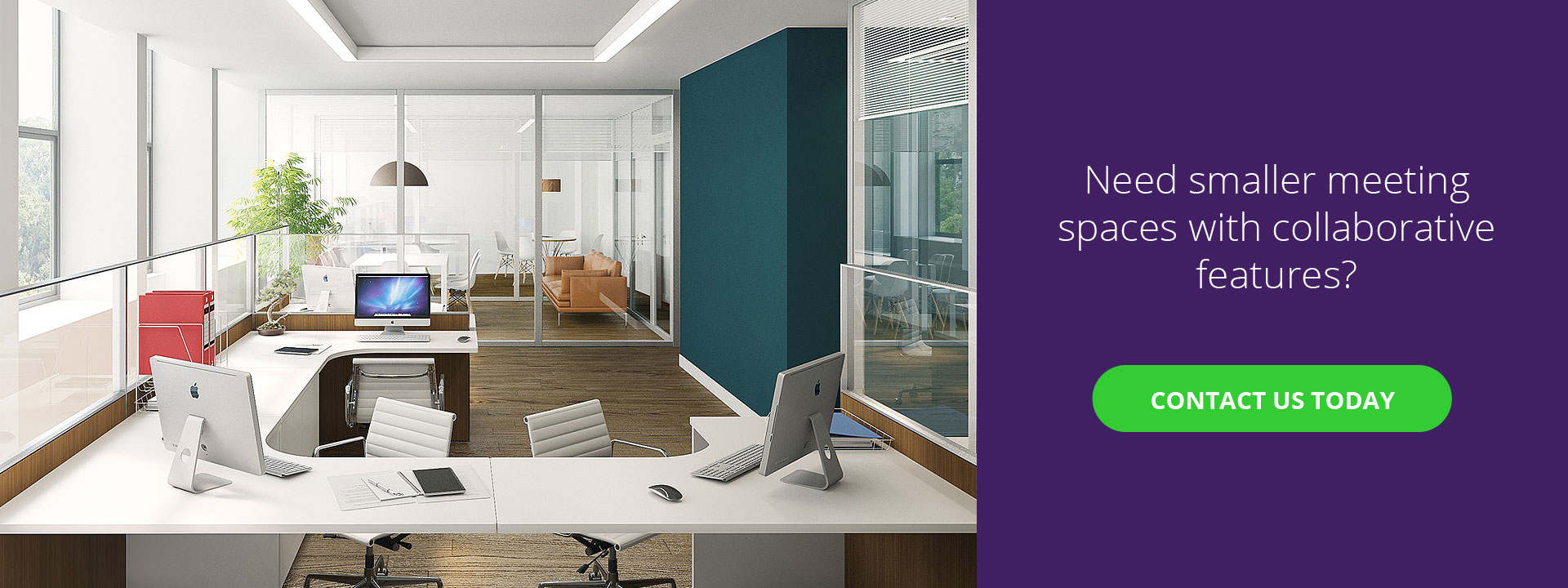
In a business environment where space is lacking, every room has to be thoughtfully designed. This means creating more small meeting rooms and flexible multipurpose areas that can be sectioned with moveable walls instead of having large boardrooms. Flexible work arrangements enable companies to reduce their real estate footprint, contain costs and maximize efficiency. Smaller is better for the objectives of today’s collaborative meetings. Analysts predict this trend toward smaller spaces will be ongoing for some time.
Key factors that are changing the approach to meeting strategy are:
1. The Freedom to Work from Anywhere
According to Polycom commissioned research on global trends and attitudes towards anywhere working, ideas of flexible working have moved from the option to work from the office or home, to being able to work anywhere. The most popular reported benefits of anywhere working are better work-life balance and productivity. For anywhere working to be successful, the right technology, in particular audeo-video collaboration technology, is essential.
2. Shifts in Communication Preferences
Business workers choose to connect via cloud-based personal communication services such as Skype for Business, Zoom, GoToMeeting, Jabber, instant messaging (IM) and personal and group video conferencing solutions. Technology to facilitate effective meeting collaboration includes large format displays, interactive displays and easy, wireless content sharing software.

In a couple of years meeting room technology will utilize tools that are on the rise right now — The Internet of Things (IoT), Artificial Intelligence (AI), Virtual Reality (VR) and Augmented reality (AR). For example. Ricoh’s Watson-equipped interactive whiteboard creates transcripts, translates the meeting into nine languages, creates action items and sends summaries to all meeting attendees. This innovation, along with the capabilities of voice-control platforms like Amazon Echo (Alexa), Google Home and Apple HomePad could soon be a part of the boardroom.
Future meeting room technology is exciting, but the business for integrators is certain to change.
3. Software-based Communication Solutions
Teams have become more efficient thanks to the shift from hardware to software-based architectures: download-and-install audio, video, and data sharing communication.
4. A Tech-native Workforce Accustomed to Flexibility
A large percentage of today’s workforce grew up surrounded by technology. They have distinctly different work styles and expectations:
- Faster, more efficient problem solving
- Increased innovation, trust, and loyalty
- A greater sense of purpose and ownership
- Enhanced skill development
- Improved job satisfaction and employee retention.
- Drive to facilitate greater collaboration.
5. Networking
Currently meetings and events are judged not just on their content but how effective of a networking opportunity it was. Meeting spaces and venues offer video systems and overflow monitoring that broadcast presentations from large rooms into smaller spaces and hallways allowing attendees to take in content of presentation and remain social and collaborative at the same time.
Those factors have had major impacts on meeting room strategy. The need to develop spaces for collaborative meetings has taken center stage.
Takeaways
The way meetings are conducted is evolving because of the changing demographics, new technologies, social trends and financial imperatives. To address today’s needs, conference rooms are becoming smaller, more comfortable and adaptable. Many companies are moving from projection technology to large format displays that easily display content from participants’ devices. Because collaboration, communication and connectivity are changing the future of meeting room technology, the role of the AV Integrator will continue be important.
Related Links
Remote Workers Are Outperforming Office Workers-Here’s Why
Why the ‘Resimercial Workspace’ is the Next Big Thing in Alternative Workspaces
